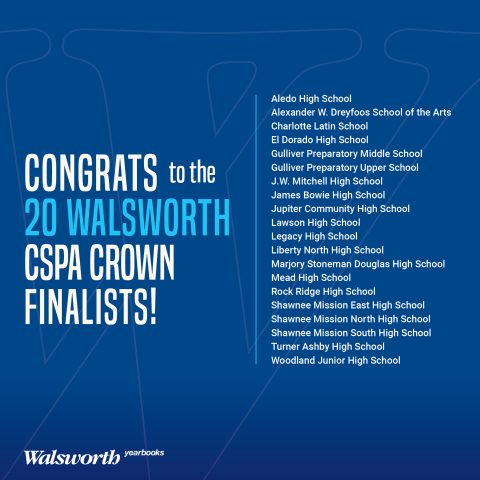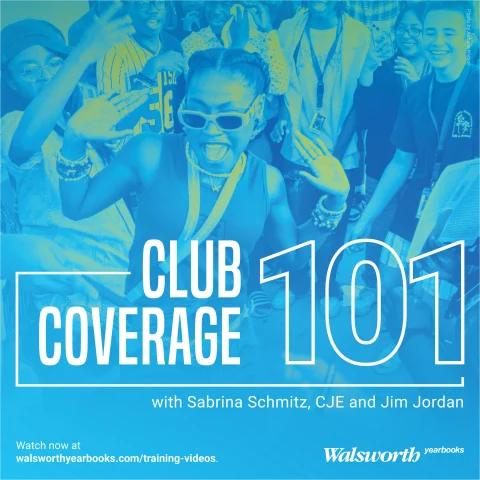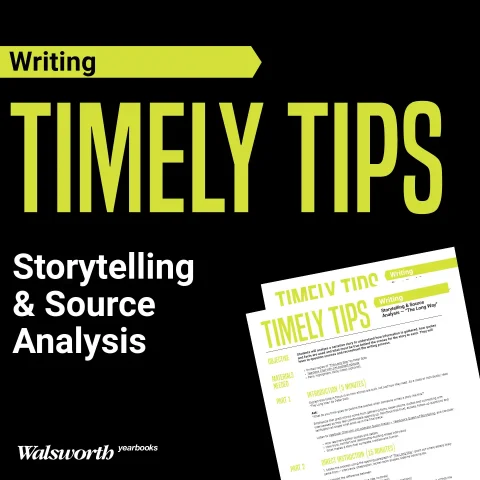“Do you think anyone will get bored with the repeating pictures?” Liz asked me as she was finishing the last division page. “Maybe we should have used different ones.”
I pondered the question, wondering if anyone outside the yearbook staff would even notice that the pictures were the same. The repeating pictures were a big part of our theme, and I was more worried about people getting the theme, rather than getting bored with it. I often think we could just make every yearbook black and gold with a big old Viking (our sacred mascot) on it year after year, and the majority of the students would never notice.
So, why do we torture ourselves trying to come up with a perfect, prolific and profound theme? Because a good theme makes a good yearbook. A bad theme can ruin it.
The purpose of the yearbook is to tell the story of a particular school year, capturing the mood and climate of the school and its students. This is no small task.
The staff of the 1998 Blueprint at Georgia Institute of Technology, Atlanta, used the theme “Beneath the Surface” to illustrate that there is more to Georgia Tech than the engineering program. A graphically enhanced photo of the campus diving pool was used with the initials “GT” beneath the surface of the water to further convey the theme. Throughout the book, the copy sought to prove the diversity and culture of the school.
A theme unifies the book and creates an opportunity for readers to become involved. It also makes the book specific to the particular school year, and sets it apart from all the other years. It is the common thread that ties all elements of the book and the year together. A theme can be a word, phrase or expression. Again, no small task.
A traditional theme development package utilizes words combined with graphics on the cover, endsheets, title page, opening section, division pages, and closing section. Generally, the first step, after choosing the theme that reflects this particular year in this particular school, is to create the “look” of the theme.
An appropriate typeface must be selected and the theme words must be presented in a manner that sets the tone for the book. A theme phrase must have audience appeal and a strong graphic personality that enhances the theme words. Color, lines, foil, typeface and texture are all elements that the yearbook staff may choose from to help graphically set the appropriate tone and enhance the theme words. This graphic representation of the theme will appear first, and most importantly, on the cover. This combi nation of graphics and words. or theme package, will then be adapted to appear on inside theme-related pages. Carefully consider the typeface that will be used in the theme package. It must be one that clearly communicates the tone or mood of the book, as well as one that is appealing enough to remain fresh in its many uses throughout the book.
As the staff prepares to develop the theme on inside pages, the theme package from the cover will be adapted. The adaptation of the theme and its graphics may simply be a repeat of the presentation on the cover, only smaller; it may be a simplification of the cover presentation; or the adaptation may be as limited as repeating an easily identifiable typeface in the folio-tab (page number and section name) or in a logo for a sidebar. A small graphic that appears in each page folio is another way to adapt the graphic look of the theme and include it on every page.
The title page of the book generally includes a smaller version of the theme graphic as it appeared on the cover as well as a photograph that somehow relates to the theme. A simplified version of the theme graphic appears the opening, division and closing pages in addition to copy and photographs that explain how the theme relates to the year or the section of the book. Opening and closing sections tend to utilize similar or identical design while division pages are generally distinctively designed and remain closely related to the opening and closing design.
Many schools use mini-themes to develop sections and tie them into the overall theme. A mini-theme is generated from the basic theme statement and can also function as spin-off titles for sections.
Most schools use a catch phrase to summarize their theme. The 1998 Catamount staff at Crosby High School, Crosby, Texas, used the phrase “One Way or Another” as their theme. This theme, which focused on the various choices presented to high school students, was cleverly presented in each section: “Believe it or Not” (Student Life), “Pass or Fail” (Academics), “My Way or No Way” (People), “Win or Lose” (Sports), “Lead or Follow” (Clubs), and “Pay Now or Later” (Advertising). Each spin-off title offered two options relevant to the section and made use of repetition with the word “or” from the theme. These mini-themes appear for the first time on the endsheets. Many yearbook staffs choose to place a table of contents on the endsheets which not only presents the mini-themes, but briefly explains each mini-theme’s relationship to the main theme and the contents of the appropriate section.
A catch phrase can also be a single word or group of words. The staff of the 1998 Deka at Huntington North High School, Huntington, Ind., uses six individual words as a concept rather than a catch phrase. “Camaraderie,” “Fundamentals,” “Commitment,” “Leadership,” “Applause,” and “Community” represent the sections and appear intertwined on the cover. The staff has also taken a non-traditional approach to copy, using scatter stories and long captions rather than long copy blocks.
To see how a theme works to bring a yearbook together, it is important to look at books that use the theme package to its best advantage. The 1998 Cambia staff at Oak Park High School, Kansas City, Mo., truly “Couldn’t Have Said it Better.” Spin-off titles enhance the theme: “It’s in our lifestyle” (Student Life), “It’s how we play” (Sports), “It’s in our grades” (Academics), “It’s where we belong” (Clubs & Activities) and “It’s in our faces” (People). The copy and photographs emphasize the events and people that shaped the school year. The cover design utilizes words and phrases that were important throughout the year, summarized by the phrase “Couldn’t have said it better.” The staff used quote collections and pulled quotes on inside pages, which helps to support the theme. What better way to tell a story than to find someone who couldn’t have said it better?
The 1998 Talon staff, Crescenta Valley High School, La Crescenta, Calif., used a one word theme to create a concept: “Framework.” The section titles relate to the concept. “Balance of Atmosphere” (Student Life), “Blueprints in the Making” (People), “Cornerstone to Success” (Academics), “Engineered to Endure” (Sports), “Additional Structures” (Organizations), and “Concrete Foundations” (Community).
Coming up with the perfect theme for the year is a difficult task. It takes a lot of creativity and equal parts of luck, magic, and hard work. These are the elements that help make a yearbook unique, that separate it from another yearbook in a different year.
That black and gold yearbook with the Viking emblazoned on the front will not look unique enough in 1999 to separate it from the black and gold yearbook with the Viking silk screened on it in 1998, or 1988.
On second thought, I bet if we produced a yearbook in the school colors with the mascot on the cover every year, people would get bored.
I know I would.



